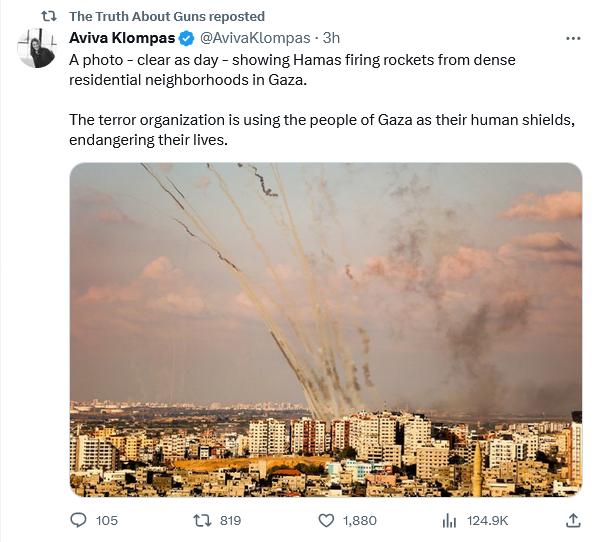Matt Gurney in The Line:
On Nov. 6, one-month-less-a-day after the Hamas assault on southern Israel, I was one of a small number of journalists to receive a briefing by a senior Israeli government official at the Israeli consulate in Toronto. Part of the briefing was the showing of a film, approximately 42 minutes long, that contained video and audio records of the attack. The sights and sounds came from many sources, including home security footage, survivor footage, surveillance cameras at private residences, military facilities and in public places, as well as cameras and Go-Pro-style body worn cameras carried by Hamas. Later in the film, we also see footage taken by Israeli first responders — some of it informally, via body worn cameras and smartphones, but some of it also deliberately and meticulously, as part of the documenting of the attack’s aftermath. The video also included audio portions of what the Israeli government claims is intercepted Hamas communications sent during the attack.
I have to preface this near the top: I can’t vouch for the authenticity of the videos, or of the translations. I believe that the videos are authentic and the translations accurate — the latter is easier, since it has by now been shown to enough people that any false translations would have been noted by members of the audience, but I don’t speak Hebrew or Arabic, and had to rely on the captions. As for the videos, while some of what I saw on Monday was new to me, other clips have already been shared widely on social media. There’s a decent chance you’ve seen some of them, too. For further disclosure, many of the clips are very short — a few seconds each. The Israelis said that in many cases, they are only choosing to release what the families of victims have agreed to allow to be shown. That’s an editorial decision, and I haven’t seen the unedited videos. I can’t tell you what I wasn’t shown.
So if you’re absolutely determined to find a way to discredit or dismiss everything I’m about to say, I’ll keep it easy for you. I saw what was presented to me, by Israel, and have little ability to independently confirm any of it.
If you’re interested in hearing what I saw, though, here it is.
I should start by telling you I don’t plan to dwell on all the atrocities or try to summarize the whole 42 minutes of carnage I watched in any kind of coherent sequence. It’s not that the atrocities aren’t important — they’re obviously the central point of the briefing for reporters, and what I was asked to bear witness to. My thinking is simply this: much of what I could tell you has been summarized elsewhere. The global media first saw this film, in Israel, two weeks ago; some of my Ottawa-based colleagues saw it last week. If you’re looking for a summary of the contents, those exist already. I don’t think you’d benefit from just another version of that, and I know I wouldn’t enjoy writing one. So in the main, I’ll avoid long, descriptive passages where I tell you what I saw. I’ll try to offer something different.
But first, let’s get this out of the way. I confess that I was afraid when the video started. Simple fear. Fear I’d crack, fear I’d have to look away, fear I’d somehow fail to meet the moment. I don’t know if that was a rational fear — what the hell does meeting the moment even mean? — but I was afraid. I was afraid from the moment I was asked to attend and said yes. As the film began, though, I found many of the videos less graphic than I’d feared, and actually less graphic than some of what I’d already seen and written about. No one should mistake me — the videos are graphic, some of them extremely so. But in many cases, the videos are taken from too far away or from an unsteady camera (particularly the body worn ones) and many of the worst gruesome details are thus obscured or missed.
Not all of them. Lord no, not all. But some. That helped.

















